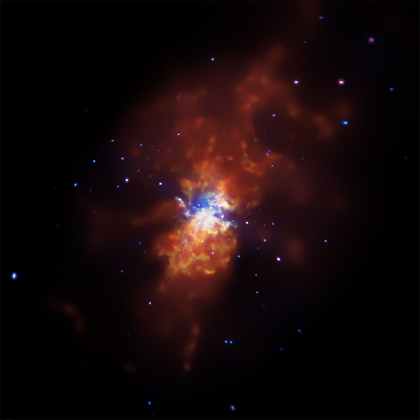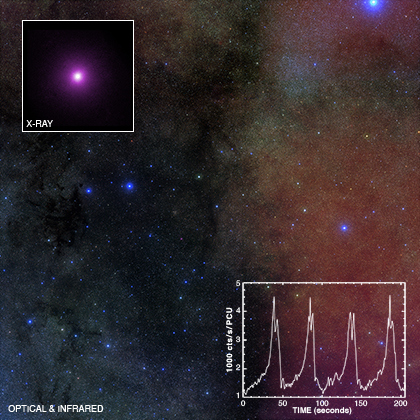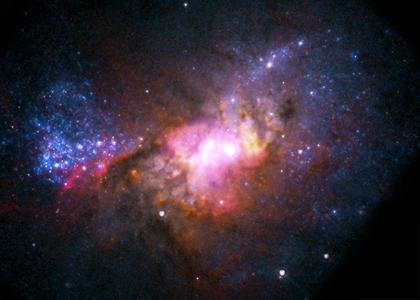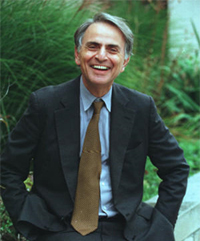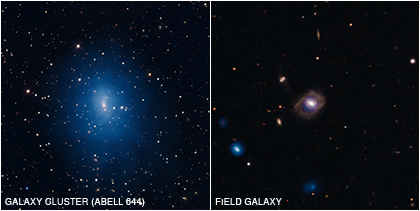Women in the High-Energy Universe: Melissa Weiss
Melissa Weiss has been a graphic designer for the Chandra project for over a decade. Her work can be seen throughout Chandra's website as well as its print and multimedia products for students, teachers and the public.
I have to be honest, my career in astronomy happened organically. Part of me wants to say that, as a child, I always looked up at the stars and dreamed of what lay with them. But the reality is that my interests weren't really up with the stars, but down on canvas with paints, pens, and any other tool I could be creative with. Art has always been my passion.
Chandra Images Torrent of Star Formation
A new Chandra X-ray Observatory image of Messier 82, or M82, shows the result of star formation on overdrive. M82 is located about 12 million light years from Earth and is the nearest place to us where the conditions are similar to those when the Universe was much younger with lots of stars forming.
M82 is a so-called starburst galaxy, where stars are forming at rates that are tens or even hundreds of times higher than in a normal galaxy. The burst of star birth may be caused by a close encounter or collision with another galaxy, which sends shock waves rushing through the galaxy. In the case of M82, astronomers think that a brush with its neighbor galaxy M81 millions of years ago set off this torrent of star formation.
Taking the Pulse of a Black Hole System
This optical and infrared image from the Digitized Sky Survey shows the crowded field around the binary system GRS 1915+105 (GRS 1915 for short) located near the plane of our Galaxy. The top-left inset shows a close-up of the Chandra image of GRS 1915 , and the bottom-right inset shows the remarkable "heartbeats" seen in the X-ray light from this system. Using Chandra and the Rossi X-ray Timing Explorer (RXTE), astronomers have discovered what drives these heartbeats and given new insight into the ways that black holes can regulate their intake and severely curtail their growth.
AAS News in Action
Today is the first official day of the American Astronomical Society meeting here in Seattle (Twitter user? The hashtag is #aas217). Right now, scientists are announcing the first rocky planet found by NASA's Kepler mission. Later on, there will be a black hole press conference -- including Chandra data! -- and then news from Fermi on the gamma-ray sky. While this news is being announced, here is a little behind-the-scenes information on this process.
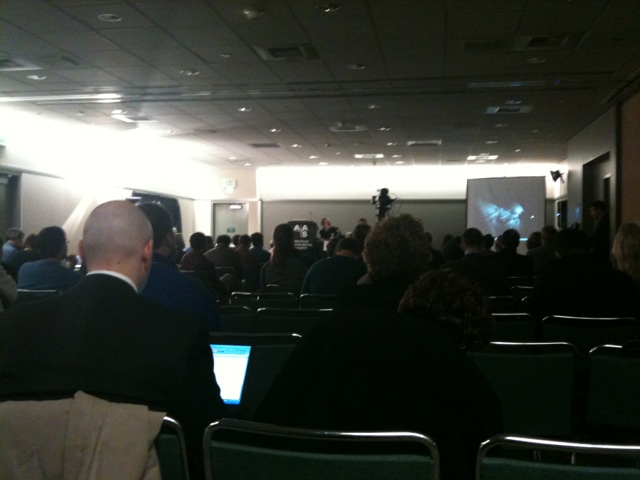
Big Astro Fun
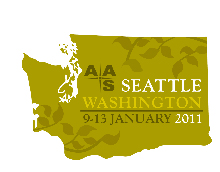
What constitutes 'fun' for astronomers? Well, besides getting new data and results, it might be *talking* about their new data and results. A lot of astronomers will get a chance to do this next week at the twice-annual American Astronomical Society meeting. This one is happening in Seattle, WA, where, in addition to rain, many new and exciting discoveries are expected. Chandra will have new stories coming out on Wednesday and Thursday so keep an eye open for those here. We'll be posting more information as we go, but in the meantime, here's an official announcement about next week's meeting:
Student Poems Inspired by Chandra Releases (2)
Jonathan Taylor, Senior Lecturer in Creative Writing at De Montfort University in the UK, wrote two poems called 'History Lesson' and 'Black Hole in B-Flat,' both inspired by Chandra discoveries, and featured on Chandra's blog. Because of the success of these poems, Chandra and De Montfort University subsequently ran a competition for Creative Writing undergraduate students, in which they were invited to submit poems inspired by one of Chandra's press releases. The competition aimed to uncover the poetry inherent in the kind of scientific discovery undertaken by Chandra, and the four winning entries certainly succeeded in doing precisely that.
Here are the first and second placegetters in the competition. The third and fourth placegetters included in a previous blog posting.
Happy Winter Solstice
This is a hectic season with many reasons to celebrate. One of the oldest and, in many ways, practical rites during this time in December involves marking the winter solstice. Today, we know it as the shortest day (or longest night) in the Northern Hemisphere, and this year, the moment occurs at 6:38 pm Eastern time on Tuesday, December 21st.

